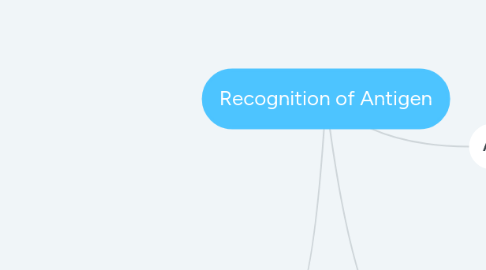
1. Lymphocytes
1.1. Little function until they encounter a specific antigen capable of binding to antigen receptor on their cell surface
1.1.1. B cells
1.1.1.1. BCRs
1.1.1.2. secrete antibodies used as antigen-binding effector molecule
1.1.1.2.1. Antibodies are composed of two identical heavy chains and two identical light chains
1.1.2. T Cells
1.1.2.1. TCRs
1.1.2.1.1. Composed of alpha and beta chain
1.1.2.1.2. Has a constant and variable region
1.1.2.2. Recognizes antigens displayed on surface of host immune cells
1.1.2.2.1. TCRs on the surface of the t-cell bind peptide MHC complexes
1.1.2.3. Recognize linear peptides that bind clefts to MHC molecules
2. Antigen
2.1. Any molecule or part of molecule recognized by lymphocytes.
2.1.1. B-cells
2.1.1.1. Immunoglobulines recognize antigens
2.1.2. T-cells
2.1.2.1. Membrane bound proteins
3. Antibodies
3.1. Two functions
3.1.1. Bind specifically to pathogen or its products
3.1.2. Recruit other cells/molecules to eliminate pathogen
3.2. Attach to wide variety of pathogens
3.2.1. Variable region
3.2.1.1. Antigen binding
3.2.2. Massive repertoire of antibodies in an individual
3.2.3. Effector mechanisms to bind, destroy, and recruit molecules
3.2.3.1. Constant region

